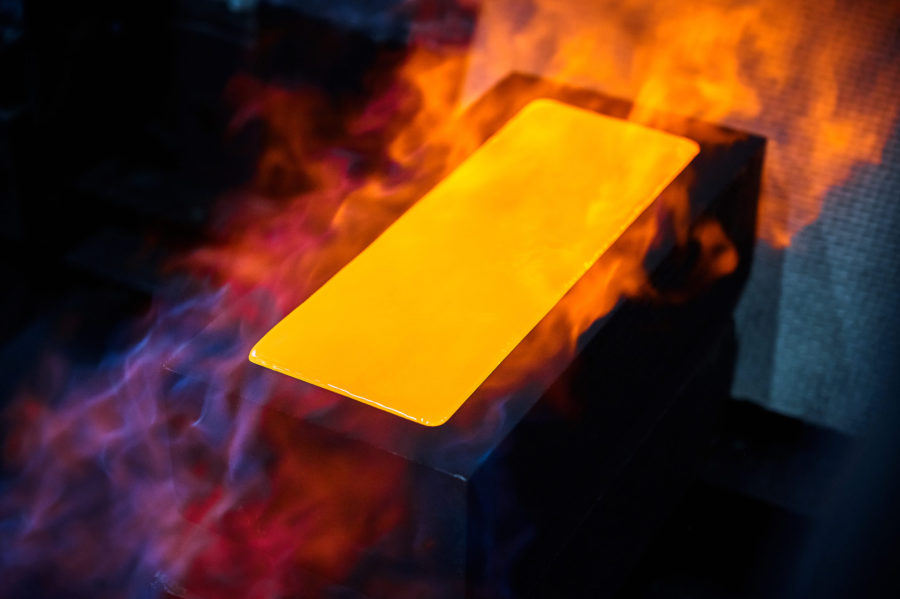Seafloor – the new frontier
The mineral riches of the world’s ocean floor are an emerging frontier for mineral resources and innovative new mining technologies.
Seafloor ores have long been seen as the next frontier for resource exploration and extraction. Technical and logistical challenges of working in remote, deep sea locations, along with concerns for the ocean environment, have been key barriers in the past.
Depressed world metal prices and the availability of resources from land operations in the developing world, have also delayed the desire to pursue this opportunity. However, as land resources are depleted, attention has shifted back to the massive seafloor sulphide deposits that are rich in copper, gold, silver and zinc.
Canadian company, Nautilus Minerals was the first company to explore the ocean floor for polymetallic seafloor massive sulphides and to be granted a lease and environmental permit to mine such deposits.
Nautilus are gearing up to mine at a site known as Solwara 1, at 1600 metres depth in the territorial waters of the Bismarck Sea off Papua New Guinea.
“Given that 70 per cent of the planet is covered by water and that significant high-grade mineral resources have been identified on the ocean floor it makes sense for the mining industry to move offshore in much the same way the oil and gas industry did 50 years ago,” said Mike Johnston, CEO of Nautilus Minerals.
“Solwara 1 has a copper grade that is more than ten times higher than the average copper grades we find on land,” Mr Johnston said. “The deposit is about seven per cent copper but is also comes with gold of six grams per tonne on average and up to 20 grams per tonne in some areas.”
To overcome the technical and environmental challenges of operating safely and effectively at sea and on the seafloor, Nautilus along with partners, Soil Machine Dynamics and GE Oil & Gas have designed the key ‘seafloor production tools’ (see Figure 1) and the ‘riser and lifting system, namely:
- the auxiliary cutter to pioneer and prepare the rugged sea bed
- the bulk cutter to excavate material once the auxiliary cutter has set up the site
- the machine to collect and draw the mined material, as part of a seawater slurry, through a flexible pipe to the subsea pump, and onto the production support vessel via the riser and lifting system.
“We are delighted that factory acceptance testing of the seafloor production tools has been completed and are excited with the next stage of commissioning and wet testing of the seafloor machines to begin soon,” Mr Johnston said.
Powerful hydraulic cranes will be used to lift the cutting machines out over the vessel and carefully deploy and lower them into the ocean.
The riser and lifting system will be a ‘closed system’ that, according to Nautilus, will:
- receive the slurry from the collection machine
- use a subsea lift pump to push it through the 12-inch risers to the production vessel
- separate ore and water onboard the vessel
- pump clean and filtered water back down the two 8-inch riser pipes to drive the main pump.
In addition to its seafloor mining agreement with PNG, Nautilus holds more than 100 active prospecting licenses in Tonga, Fiji, the Solomon Islands and Vanuatu. It is one of a growing number of entities looking to develop seafloor mining resources through agreements administered through the International Seabed Authority (ISA) established by the United Nations for managing development of the open ocean for the benefit of all mankind.
“As part of our joint venture Agreement for Solwara 1, PNG has an initial 15 per cent interest in the Project and a significant long term interest that will ensure the ongoing economic benefits for the State and the Province of New Ireland,” Mr Johnston said.
In November, 2014 Nautilus entered into an agreement to charter a vessel with Marine Assets Corporation (MAC) which will own the vessel and provide marine management. Subsequently MAC entered into a contract with Fujian Mawei Shipbuilding to design and construct the vessel in accordance with Nautilus’ specifications.
“We are excited to achieve this significant milestone and look forward to the building of the production vessel for delivery in late 2017 and to make seafloor mining a reality,” Mr Johnston added.
Images can be obtained from Nautilus Minerals http://www.nautilusminerals.com/s/Media-PhotoGallery.asp
More News
{{ commodity.name }}
{{ post.title }}
{{ post.date }}

Comments